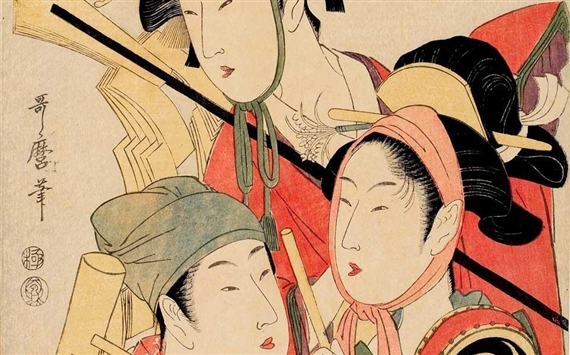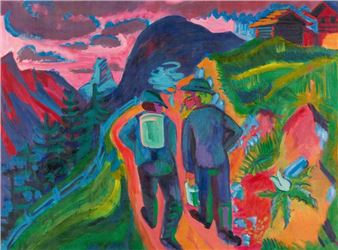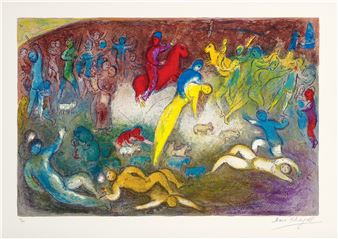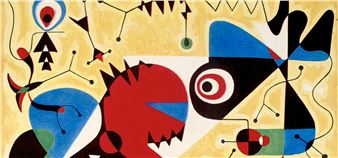Allure: Elegant Women in Japanese Prints
The Honolulu Museum of Art has one of the world's leading collections of Japanese woodblock prints, distinguished not only by its size, but also by its exceptional quality. While the museum is sometimes better known for later woodblock prints depicting landscapes by such artists as Hokusai (1760-1849) and Hiroshige (1797-1858), with the world's largest collection of art by Hiroshige in its holdings, it is equally distinguished by rare impressions by virtually every major artist involved in the first flowering of ukiyo-e, or the "art of the floating world," during the 18th century.
More than any other time, this century saw the transformation of ukiyo-e from its early beginnings in vigorous, starkly beautiful monochromatic depictions of monumentally posed beauties such as those produced by the artists of the Kaigetsudō School; through various experiments with hand-coloring and increasingly elaborate compositions nowhere better revealed than in the towering figure of Okumura Masanobu (1686-1764); to the remarkable technical innovations of full-color or "brocade" printing by Suzuki Harunobu (1725?-1770); and finally to the full maturation of ukiyo-e in the following generations, represented by some of Japan's most iconic designers, like Torii Kiyonaga (1752-1815) and Kitagawa Utamaro (1753-1806).
Allure: Elegant Women in Japanese Prints highlights this remarkable period, through the artists, the subjects, and the society that made it one of the most dynamic in the entire history of world art. Inherent in ukiyo-e was the celebration of ephemerality, in particular as it was revealed in the ever-changing fashions and interests of popular culture. Ukiyo-e artists turned their attention especially to the women of their time, in many cases idealizing (and through idealization immortalizing) the most unexpected of subjects, like the courtesans of the pleasure quarters

Recommended for you
The Honolulu Museum of Art has one of the world's leading collections of Japanese woodblock prints, distinguished not only by its size, but also by its exceptional quality. While the museum is sometimes better known for later woodblock prints depicting landscapes by such artists as Hokusai (1760-1849) and Hiroshige (1797-1858), with the world's largest collection of art by Hiroshige in its holdings, it is equally distinguished by rare impressions by virtually every major artist involved in the first flowering of ukiyo-e, or the "art of the floating world," during the 18th century.
More than any other time, this century saw the transformation of ukiyo-e from its early beginnings in vigorous, starkly beautiful monochromatic depictions of monumentally posed beauties such as those produced by the artists of the Kaigetsudō School; through various experiments with hand-coloring and increasingly elaborate compositions nowhere better revealed than in the towering figure of Okumura Masanobu (1686-1764); to the remarkable technical innovations of full-color or "brocade" printing by Suzuki Harunobu (1725?-1770); and finally to the full maturation of ukiyo-e in the following generations, represented by some of Japan's most iconic designers, like Torii Kiyonaga (1752-1815) and Kitagawa Utamaro (1753-1806).
Allure: Elegant Women in Japanese Prints highlights this remarkable period, through the artists, the subjects, and the society that made it one of the most dynamic in the entire history of world art. Inherent in ukiyo-e was the celebration of ephemerality, in particular as it was revealed in the ever-changing fashions and interests of popular culture. Ukiyo-e artists turned their attention especially to the women of their time, in many cases idealizing (and through idealization immortalizing) the most unexpected of subjects, like the courtesans of the pleasure quarters

 ARTISTS
ARTISTS
















